The Brief History of Quaaludes
"Jesus. Take a lude or something, calm down" - Starsky & Hutch (2004)
At this point, when most people hear the word Quaalude, it’s hard not to think of The Wolf of Wall Street (2013). It’s a movie that doesn’t take place in the 1970s at all, in fact it’s much more a late 1980s/early 1990s period piece.
The climax of the film shows our main characters, white-collar criminals Jordan Belfort (Leo DiCaprio) and Donnie Azoff (Jonah Hill,) extremely high on Quaaludes unable to function. The drug is talked about constantly throughout the film. It’s the crown jewel in Belfort’s party arsenal of alcohol, cocaine, and other substances.
At this point in the film, Donnie gets ahold of some “original batch” Lemmon pills and the duo take too much of the drug. They’re completely incoherent and physically destructive, and are on the brink of being arrested by the FBI for securities fraud. The paranoia and the partying is getting worse, and their Quaalude usage contributes to their downfall. Paranoia? Drugs? Doesn’t sound too far from a 1970s morality tale.
So why are these 1990s characters so into taking a very notable 1970s drug, years after it was taken off the market? Why did drug companies stop making them? What did Quaaludes do and how did they become a status symbol?
We have the short window of the 1970s to thank for all of this, and the abrupt death sentence the Reagan administration gave to the hyper-popular drug, only fifteen years after it became mainstream.
Quaaludes’ generic name, methaqualone, was first created in India in 1951 and introduced in the United States in the 1960s. Like other pharmaceuticals, Quaaludes were developed as mood enhancers to alleviate anxiety or insomnia. Barbiturates, another type of drug, became increasingly stigmatized due to their intense sedation and addictive quality. Companies decided they needed to rebrand, and introduced new less-addictive alternatives, regardless if these claims of non-addiction were unproven. Along came the highly popular and still prescribed, Valium, and then later, William H. Rorer Inc.’s star drug, Quaalude.
The drug arrived just as younger people came of age in the late 1960s and early 1970s (mainly baby boomers), and it was marketed as a cooler, lighter alternative to the tranquilizers your mother took. It became so popular, that in 1972 it was one of the most frequently prescribed drugs in the United States. Rorer did not patent their version of the drug, and the generic was widely available and could be obtained through an ordinary doctor.
Even after the early 1970s, the drug remained extremely popular and people would not only take the pill for sleeping and anxiety, but they would take it before heading out to a nightclub. The name Quaalude became interchangeable with all versions, as people colloquially called these drugs “ludes” or my personal favorite, “disco biscuits.”
In 1973 a hyper-diligent government was worried Quaaludes were becoming overprescribed and classified the drug as a Schedule II. It meant you could no longer go to your primary care doctor and complain that you weren’t sleeping well or felt anxious to get a prescription. It was now a little trickier to get a hold of.
However, people took advantage of the doctors who operated outside the margins, and pill mills to obtain Quaaludes and their generics were popular. When the drug was sold to Lemmon in the late seventies, the illicit market really took off. Doesn’t this sound like the opioid crisis to you? Can you imagine if the U.S. Government took those same steps back in the 1990s with Purdue Pharma that they did with Quaalude production? Wild.
This is where the mythos around Quaaludes really begins, and how it became a status symbol. Throughout the mid-to-late 1970s, the drug is only available through quasi-elicit means, but is also extremely popular across the United States. Everybody wants these pills, and the only people who can get ahold of them are those with a connection or a Doctor “Feelgood” (i.e. celebrities had a lot of doctors who could prescribe). In the late 1970s, when disco truly became mainstream, and the sexual revolution was in full swing, Quaaludes entered an entirely new era.
Nightclub culture in the 1970s was at its peak, and people stayed out until dawn to dance, party, and forget their day-to-day troubles. I always want to remind people how chaotic the 1970s were from a social and political standpoint, and much like in our current post-pandemic (I don’t know anymore) reality, people need catharsis, and they need full abdication of responsibility. Quaaludes helped people relax and loosen up, and were used by both men and women as an euphoric enhancer to a long night dancing to Donna Summer or Rod Stewart.
This may sound care-free, but there was a dark side to the usage of Quaaludes as well. While it helped people relax, it was a drug used to coerce women into sex. Some referred to the pills as “thigh-openers” by the likes of Hugh Hefner and others (absolutely despicable.) It became a drug that, as a woman, you needed to use extra caution, because you could become incapacitated. Men took advantage of the newfound sexual freedoms in society and they would place the drug in women’s' drinks without them knowing.
In an unsealed deposition Bill Cosby gave before his eventual arrest for sexual assault charges, he claimed to have used Quaaludes to get women to have sex with him. Notably, Samantha Geimer, the 13-year-old girl who was allegedly raped by Roman Polanski in 1977 claimed that he had given her a Quaalude, and then raped her while she was incapacitated. Due to the drug’s ease of access for celebrities and the elite, it is unfortunate, but not surprising, that these predatory men of power were able to use the drug for these purposes.
By the early 1980s, stopping the drug’s presence in society was a major priority for the Reagan Administration’s continuation of The War on Drugs. The administration decided once and for all to ban the drug in 1984. After this, the supply of illegally distributed Quaaludes dried up, and by the 1990s, it was nearly impossible to find the drug.
The drug’s extremely brief history and heyday in the 1970s fueled the nostalgia, which is probably why Jordan Belfort and his friends were so captivated by them. Especially when they found the non-generic "Lemmon" in the film, it was like finding a sacred key into a secret elite world of powerful men. When such a popular, exclusive symbol like Quaaludes disappears, it’s only going to inspire people who weren't present for its peak to yearn for it. It also inspires former club-hoppers from the 1970s to wax poetic about the drug, regardless of whether they had a good experience or not.
Scarcity can supercharge nostalgia. For example, there are tens of thousands of Western-themed movies and TV shows. In reality, the Western period in American history only took place for a very brief 20 year stretch of time. By 1900, industrialization tamped out the free-wheeling spirit of cowboys, and it was all over - the West was won and society was settled. Similarly, there are endless references in media and pop culture about Quaaludes. It was honestly such a short stretch, but apparently a powerful one.
Quaaludes were beloved by the population during their brief moment in the sun, which has made the drug’s status, far more enshrined than other drugs. Along with smoking on airplanes and the 8-track, it’s one of the truly singular fossils from the 1970s we’re never getting back, and honestly, it’s a good thing.
To end this saga about pharmaceuticals, I want to reference the opioid epidemic (I know so uplifting, right?) The government in the 1990s versus authorities in the 1970s completely dropped the ball and failed to swiftly police the companies manufacturing the drugs. I wish the United States Government took on the pharmaceutical companies behind the opioid crisis with the same fervor they used to take down Quaaludes.
For further enjoyment-
Top Tracks:
Martin Scorsese's Quaalude Adventures | CONAN on TBS
B-Sides:
Free of One’s Melancholy Self

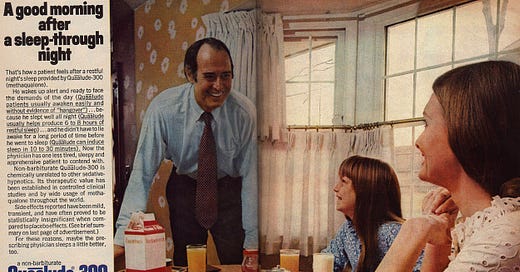



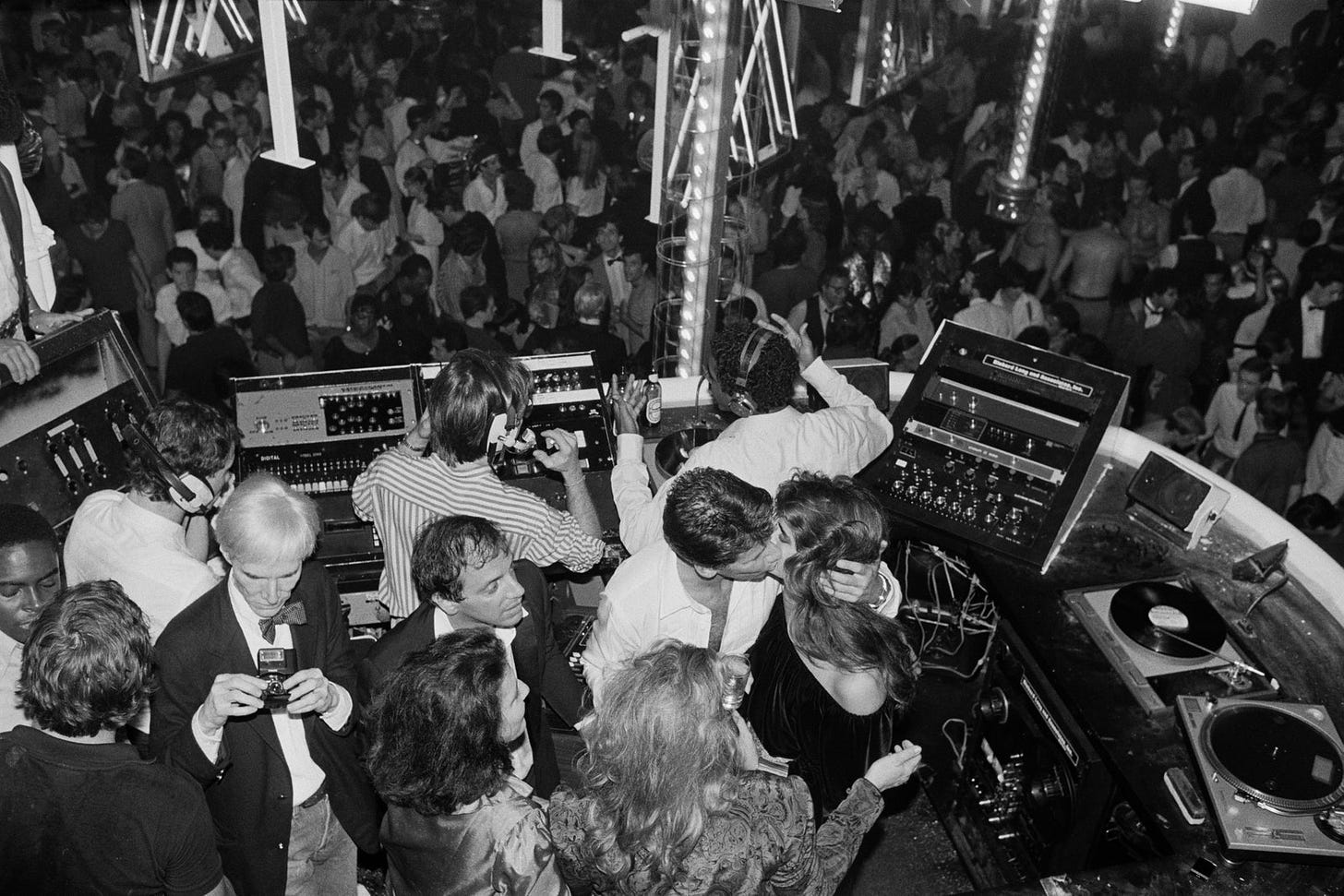

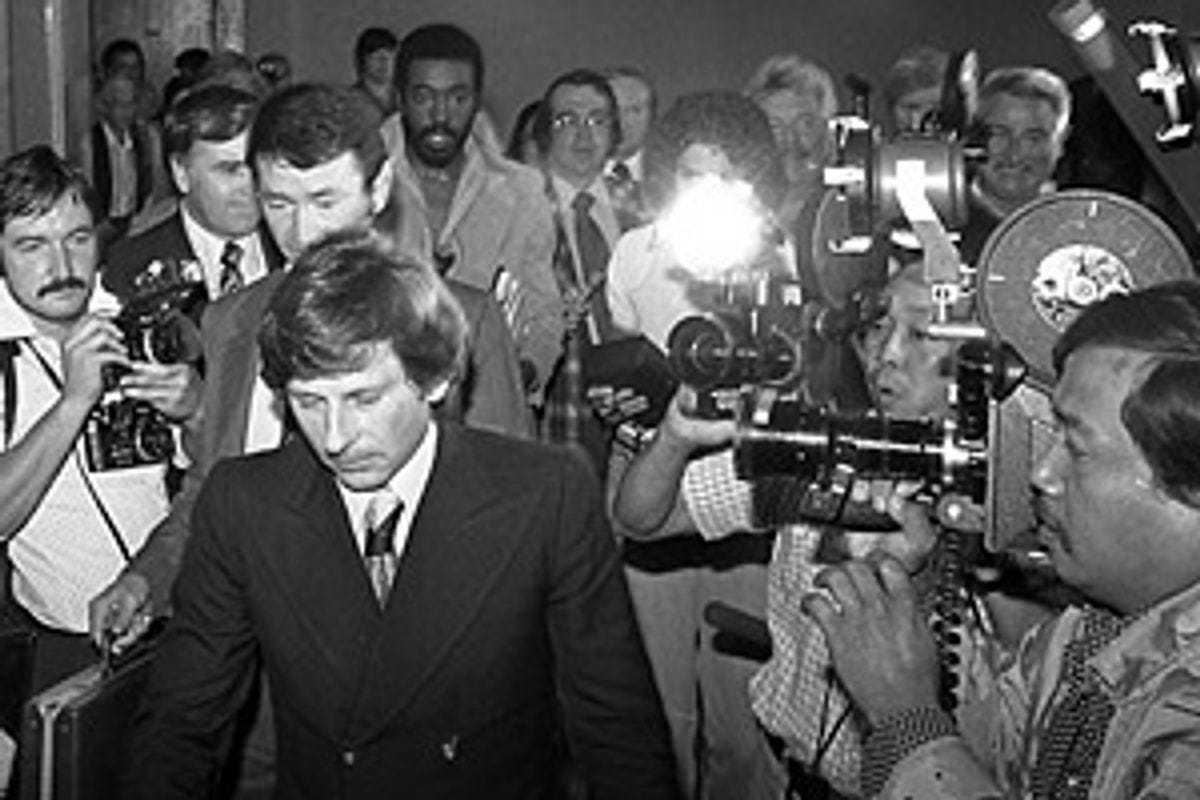
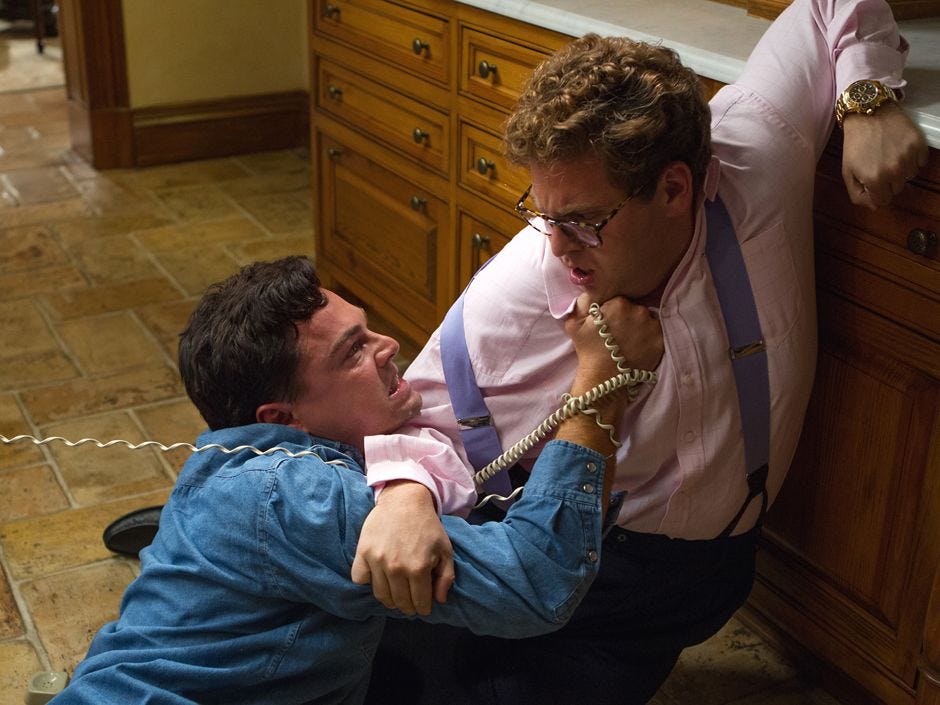
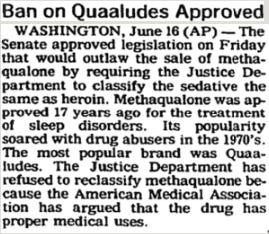
So sad!
Accurate, Hilary. Can't stress enough how quaaludes were coveted during their time.